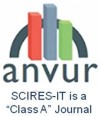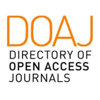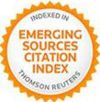Digital Visualization and Multimedia for Cultural Heritage Accessibility: Designing “For All” Video-Tours at the Archaeological National Museum of Naples (MANN) 
Abstract
Keywords
Full Text:
PDFDOI: http://dx.doi.org/10.2423/i22394303v13n2p85
References
Accolla, A. (2009). Design for All. Il progetto per l’individuo reale. Milano, Italy: Franco Angeli.
Attaianese, E. & Minucci G. (2019). Progettare percezione e piena fruizione dei siti di interesse culturale da parte di persone con autismo. In A. F. L. Baratta, C. Conti & V. Tatano, (eds.), Inclusive Living. Design for an Autonomous and Independent Living (pp. 302–311). Conegliano, Italy: Anteferma Edizioni.
Brame, C. J. (2015). Effective educational videos. Retrieved from http://www.cft.vanderbilt.edu/guides-sub-pages/effective-educational-videos
Branchesi, L., Curzi, V. & Mandarano, N. (2016). Comunicare il museo oggi. Dalle scelte museologiche al digitale. Milano, Italy: Skira.
Brischetto, A. (2017). Nuove tecnologie e apprendimento for all. Rivista italiana di Ergonomia, 14(2017), Special issue about Design for all, 34-45.
Cobb, S.V.G. (2007). Virtual environments supporting learning and communication in special needs education. Top Lang Disorders, 3 (27), 211–225.
De Koning, B., Tabbers, H., Rikers, R. & Paas, F. (2009). Towards a framework for attention cueing in instructional animations: guidelines for research and design. Educational Psychology Review, 21, 113-140.
Delacato, C.H. (1974). The Ultimate Stranger, The Autistic Child. Garden City, NY: Doubleday.
Del Zanna, G. (1999). Progettare nella logica dell’Utenza Ampliata. In A. Arenghi (Ed.), Edifici storici, turismo, utenza ampliata (pp.9-13). Como, Italy: Edizioni New Press.
Diani, M. G. (2008). Educare al patrimonio e ai servizi culturali. In S. Maggi, (ed.), Educare all'antico. Esperienze, metodi, prospettive (atti del Convegno Pavia-Casteggio, 2008) pp. 29-36. Roma, Italy: Aracne Editrice.
Falchetti, E., Da Milano, C., & Guida, MF. (2020). La narrazione digitale come strategia per l’accessibilità e l’inclusione culturale in museo. In Museologia scientifica, 21(2020), Proceedings of the XXIX Conference ANMS. (pp. 193-97). L’accessibilità nei musei. Limiti, risorse e strategie. Capasso, L., Monza, F., Di Fabrizio, A., & Falchetti, E. (eds.).
Filova, N. (2019). Human centered design of a children’s museum. SWS (Journal of Social Sciences and Art), 2(2019), 67-80.
Ghez, D. (2015). They Drew as They Pleased: The Hidden Art of Disney's Golden Age. San Francisco (CA), USA: Chronicle Books.
Giulierini, P. (2021). MANN's Digital Strategy. SCIRES-IT – SCIentific RESearch and Information Technology, 11(1), 19-22.
Guo, P.J., Kim, J., & Robin, R. (2014). How video production affects student engagement: An empirical study of MOOC videos. In Proceedings of L@S 2014 - ACM Conference on Learning at Scale (Atlanta, March 4 - 5, 2014). 41-50. Atlanta (GA), USA: Association for Computing Machinery.
Iasevoli, G. (2008). Servizi innovativi nel contesto museale rivolti al segmento famiglia: una comparazione tra la realtà italiana e quella internazionale. In Economia e diritto del terziario. 2(2008), Milano, Italy: Franco Angeli, 1-24. [24] - Retrieved from http://digital.casalini.it/10.1400/113274 - Casalini id: 2217466
Lambert, J., & Hessler, B. (2018). Digital Storytelling. Capturing Lives, Creating Community. New York, USA: Routledge.
Mayer, R. (2008). Applying the science of learning: evidence-based principles for the design of multimedia instruction. Cognition and Instruction, 19, 177-213.
Mayer, R., Moreno, R. (2003). Nine ways to reduce cognitive load in multimedia learning. Educational Psychologist, 38, 43-52.
World Health Organization (2001). ICF short version: international classification of functioning, disability and health. Geneva, Switzerland: World Health Organization.
Pecora, A. L. (2023). Lo spazio rappresentato per il disturbo dello spettro autistico (ASD). Napoli, Italy: FedOApress.
Pecora, A. L., Attaianese, E., & Pagliano, A. (2021). A Human-Centered Approach for an Autism-Friendly Drawn Space. In Advances in Human Factors in Training, Education, and Learning Sciences. Proceedings of the AHFE 2021 Virtual Conference on Human Factors in Training, Education, and Learning Sciences (July 25-29, 2021, USA: Springer.
Perin, A. (2017). Musei e banbini. Milano, Italy: AnciLab editore.
Perin, A. (2022). Al museo. Dalla parte del visitatore. Milano, Italy: Mulieu.
Serota, N. (2009). Museums and young people: Where are we now? In K. Bellamy & C. Oppenheim (eds), Learning to live: museums, young people and education. London, UK: Institute for Public Policy Research - National Museum Directors' Conference.
Tanasi, D. (2022). Preface. In E. Bonacini, Museums and Forms of Digital Storytelling. Rome, Italy: Aracne Editrice.
Tosi, F. (2017). Human-Centred Design, Design for All: una comune visione del progetto. Rivista italiana di Ergonomia, 14(2017), Special issue about Design for all, II.
Valzano, V., & Mannino, K. (2020). Cultural Heritage Communication and Digital Resources: three Examples from Messapian Archaeology. SCIRES-IT - SCIentific RESearch and Information Technology, 10(2), 1-18.
Article Metrics
Metrics powered by PLOS ALM
Refbacks
- There are currently no refbacks.
Copyright (c) 2023 Alessandra Pagliano, Barbara Ansaldi

This work is licensed under a Creative Commons Attribution-NonCommercial-NoDerivatives 4.0 International License.
SCIRES-IT, e-ISSN 2239-4303
Journal founded by Virginia Valzano




